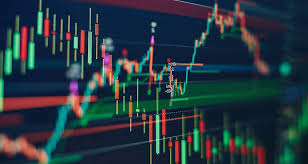
The Evolution and Importance of the Crypto Trading Graph
In the world of cryptocurrency trading, data visualization plays a vital role in decision-making. One of the most crucial tools for traders is the crypto trading graph. This article explores the evolution, significance, and functionalities of crypto trading graphs, helping you optimize your trading strategies. For a deeper dive into market analytics, crypto trading graph visit website.
What is a Crypto Trading Graph?
A crypto trading graph represents the price movements of cryptocurrencies over time. These graphs provide traders with valuable insights into market trends and help in making informed trading decisions. Typically, they display data in the form of candlestick charts, line graphs, or bar charts. Each type of graph serves a unique purpose and caters to different trading strategies.
The Significance of Crypto Trading Graphs
1. **Price Trends**: Crypto trading graphs depict historical price movements, allowing traders to identify trends, support and resistance levels, and potential reversal points.
2. **Market Sentiment**: The trading graph can reveal market sentiment, showing whether traders are bullish or bearish based on past price movements.
3. **Technical Analysis**: Traders often use various technical indicators and overlays, such as moving averages, RSI, and MACD, on these graphs to predict future price movements.
Types of Crypto Trading Graphs
There are several types of trading graphs that traders commonly use. Here are some of the most popular:
**Line Charts**: Line charts are simple representations of price movements over time. They connect closing prices with a continuous line, providing a clear view of the asset’s overall trend. While they simplify data interpretation, they can sometimes oversimplify volatile price movements.
**Candlestick Charts**: Candlestick charts are favored among traders for their detailed visualization. Each candlestick represents price data within a specific time frame, showing the open, close, high, and low prices. The body of the candlestick indicates the price movement direction, while the “wicks” indicate price fluctuations during that period. This allows traders to analyze market sentiment effectively.
**Bar Charts**: Similar to candlestick charts, bar charts display the high, low, open, and close prices for a particular time period. They provide a more abstract representation of price movements but can be effective for understanding market trends.
Understanding Chart Patterns
Chart patterns are formations that traders recognize on trading graphs, which can indicate future price movements. Here are a few common patterns:

1. **Head and Shoulders**: This pattern suggests a reversal in trend—whether bullish or bearish. It consists of three peaks: a higher peak (head) between two lower peaks (shoulders).
2. **Double Top and Double Bottom**: These patterns indicate potential reversal trends. A double top consists of two peaks at the same level, while a double bottom indicates a price level that rallies after hitting the same low twice.
3. **Flags and Pennants**: These continuation patterns, formed after a price movement, suggest that a trend will likely continue after a brief pause. Flags resemble rectangles, while pennants look like small symmetrical triangles.
Integrating Indicators
Adding technical indicators to a crypto trading graph enriches analysis and improves decision-making. Here are a few essential indicators:
1. **Moving Averages**: These indicators smooth out price action and help highlight the direction of the trend. A common strategy is using the crossover of short-term and long-term moving averages to signal buy or sell opportunities.
2. **Relative Strength Index (RSI)**: The RSI measures the speed and change of price movements, helping traders identify overbought or oversold conditions in an asset.
3. **Moving Average Convergence Divergence (MACD)**: This indicator analyzes the relationship between two moving averages of an asset’s price, signaling potential buy or sell opportunities when they cross.
Reading Volume on Trading Graphs
Volume is an essential component of crypto trading graphs as it indicates the number of assets traded during a specific period. Higher volume usually confirms price movements, while lower volume can indicate potential reversal points. A sudden spike in volume often precedes significant price changes.
Utilizing Trading Bots and Algorithms
In addition to manually analyzing crypto trading graphs, many traders use automated trading bots and algorithms. These tools can track multiple graphs simultaneously, executing trades based on pre-set conditions, thus saving time and improving efficiency. However, traders must ensure they understand the data being processed by these algorithms to avoid potential losses.
Staying Informed on Market News
Aside from technical analysis through crypto trading graphs, staying updated on market news is crucial. Events such as regulatory changes, partnerships, or technological updates can significantly impact the market. Combining technical analysis with fundamental analysis ensures a well-rounded approach to trading.
Conclusion
The crypto trading graph is an indispensable tool for traders looking to navigate the volatile cryptocurrency market. By understanding the various types of graphs, patterns, and indicators, traders can enhance their strategies and make informed decisions. As the market evolves, so should your analysis techniques, blending data-driven insights with market awareness for a successful trading experience.
コメントを残す